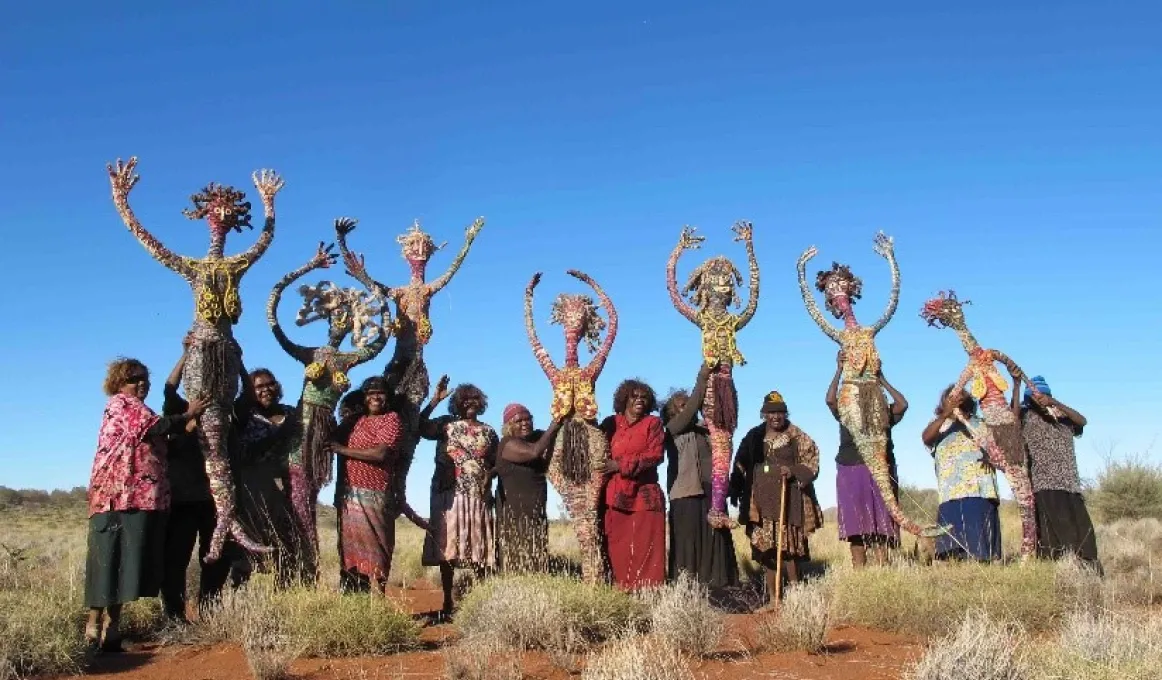Following the Seven Sisters

Martu Artist Ngalangka Nola Taylor is one one of the many artists and senior custodians who have been involved in designing and curating Songlines: Tracking the Seven Sisters; an exhibition at the national Museum of Australia which outlines the country’s creation as it follows the passage of the Seven Sisters.
Martu artist Ngalangka Nola Taylor remembers her mother and father teaching her about Songlines.
“We were told, we live in a country, in Australia, but it’s special, always be special, need to know every single line of things,” Nola said.
Songlines are paths across the land or sky which mark the route followed by creator-beings during the Dreaming* that can be communicated through traditional songs, stories, dance and painting.
Nola is one of the many artists and senior custodians who have been involved in designing and curating Songlines: Tracking the Seven Sisters; an exhibition which outlines the country’s creation as it follows the passage of the Seven Sisters and their efforts to evade a lustful male pursuer.
The exhibition covers a vast geographical area, stretching from Martu country in the west, to the lands of the Ngaanyatjarra, Pitjantjatjara and Yankunyjatjara in Central Australia.
“[Seven Sisters] is not just one songline – they travelled all around Australia. And even other people overseas know the Seven Sisters story in their own way, so it’s a special story. It’s not only what happened here in Australia but it happened everywhere else,” Nola said.
A focal point of the exhibition is a dome experience which immerses audiences in significant sites of the Seven Sister’s journey across the land and sky. Another key exhibition piece is Yarrkalpa (Hunting Ground), a painting which conveys an encyclopedia of seasons, burning practices and resources.
“[It’s] important to share what we do On Country each day, it’s like a map of our little community, and it’s how we do, each day, go out and hunt and burn off and keep the country clean, and like bringing up the new growth and everything, and bringing birds and animals back to an area,” Nola said.
Senior law woman and traditional owner of the Seven Sisters songline, Pitjantjatjara and Yankunytjatjara lands, Inawinytji Williamson said Dreaming creation law is strongly held and it’s important to teach future generations about it.
“We have brought the song, story and paintings full of Tjukurpa, the creation spirit of the Seven Sisters, to put in our Canberra exhibition. We want to show this major creation here so many other people can look, learn and increase their understanding.
All people, white and black, can come and see and understand. And it’s for teaching all our children, our granddaughters and grandsons – to keep culture strong. That is why we are making this exhibition so everyone can see and understand that our Tjukurpa law stand strong today.” Inawinytji said.
* The Dreaming and its stories are linked to the creation process and spiritual ancestors as believed by some Aboriginal peoples
Find out more
For more information about the Songlines: Tracking the Seven Sisters exhibition visit www.nma.gov.au.